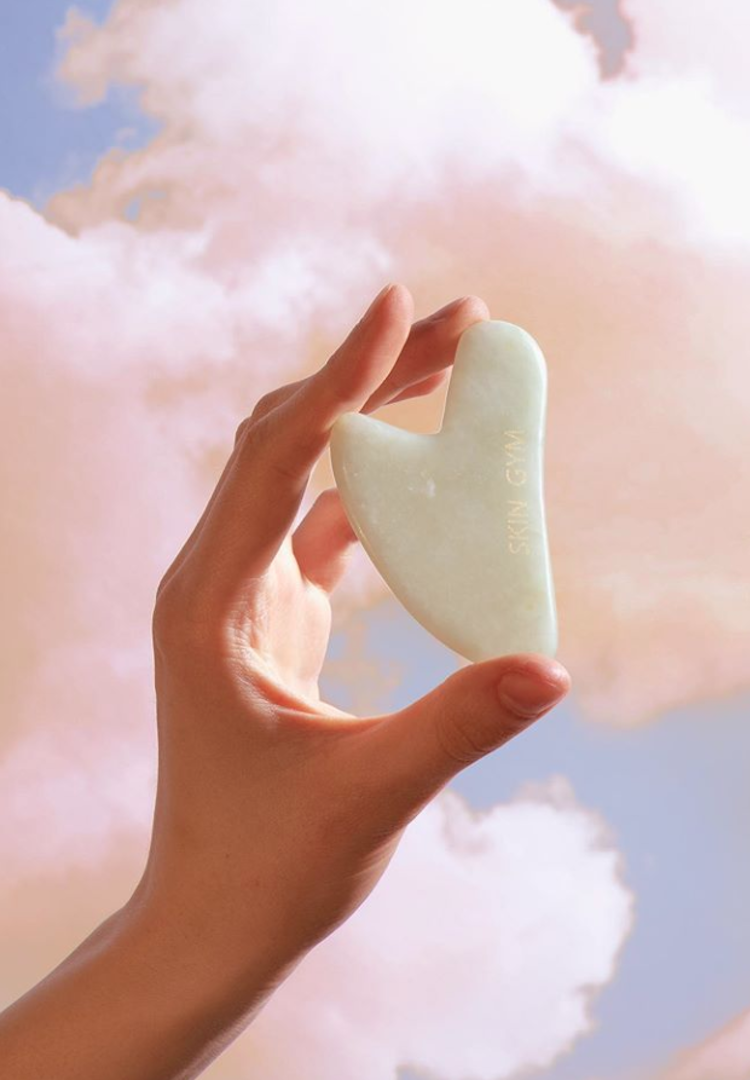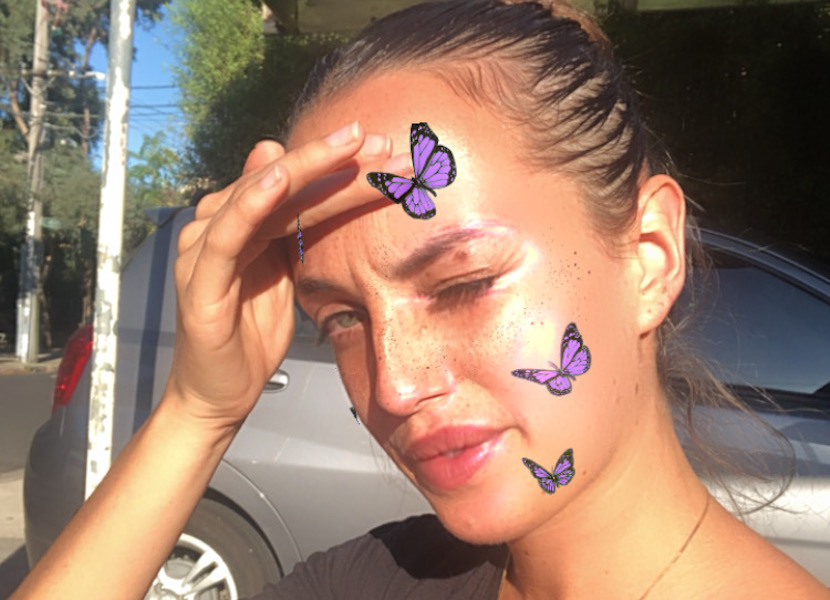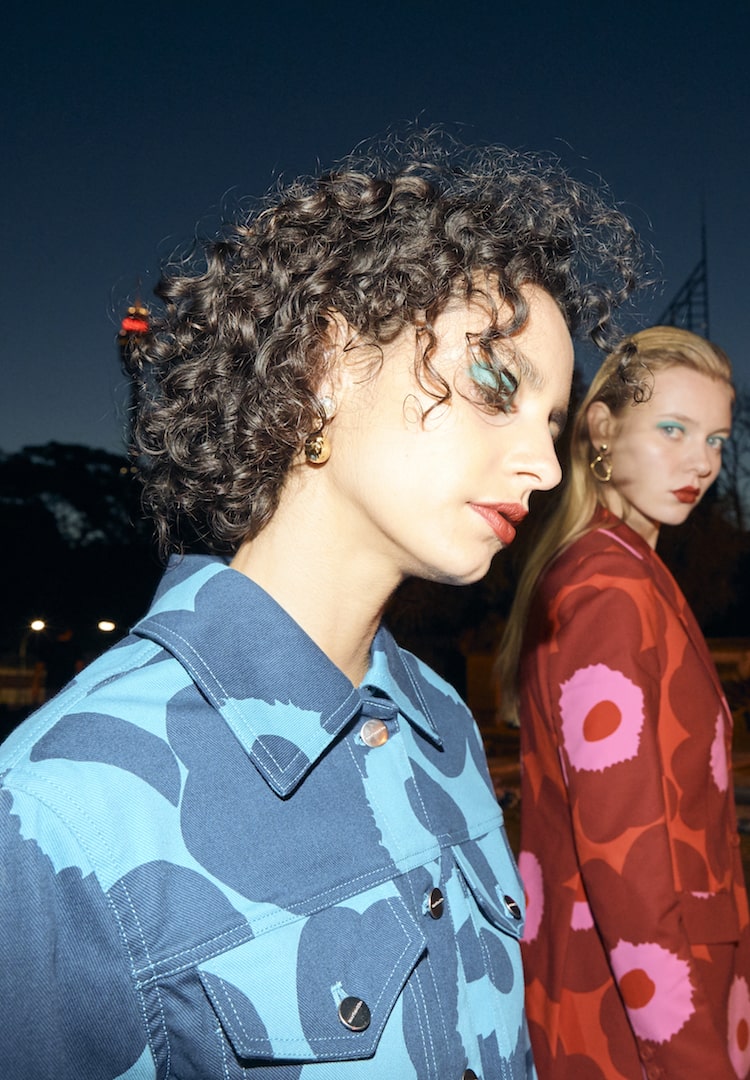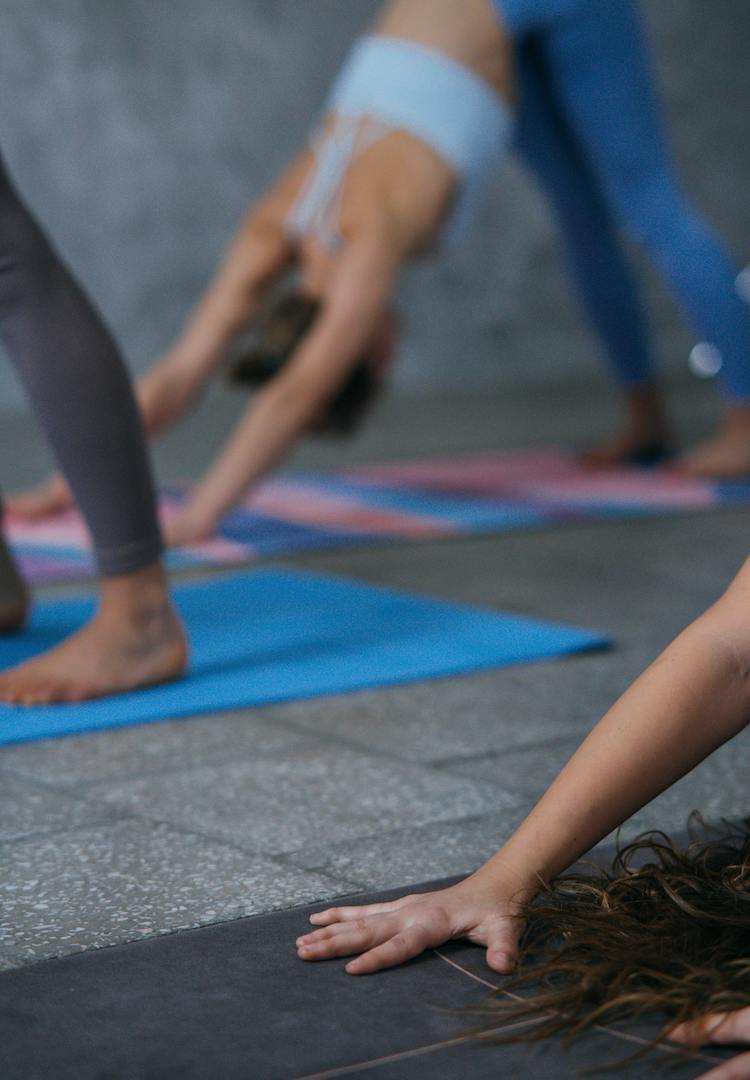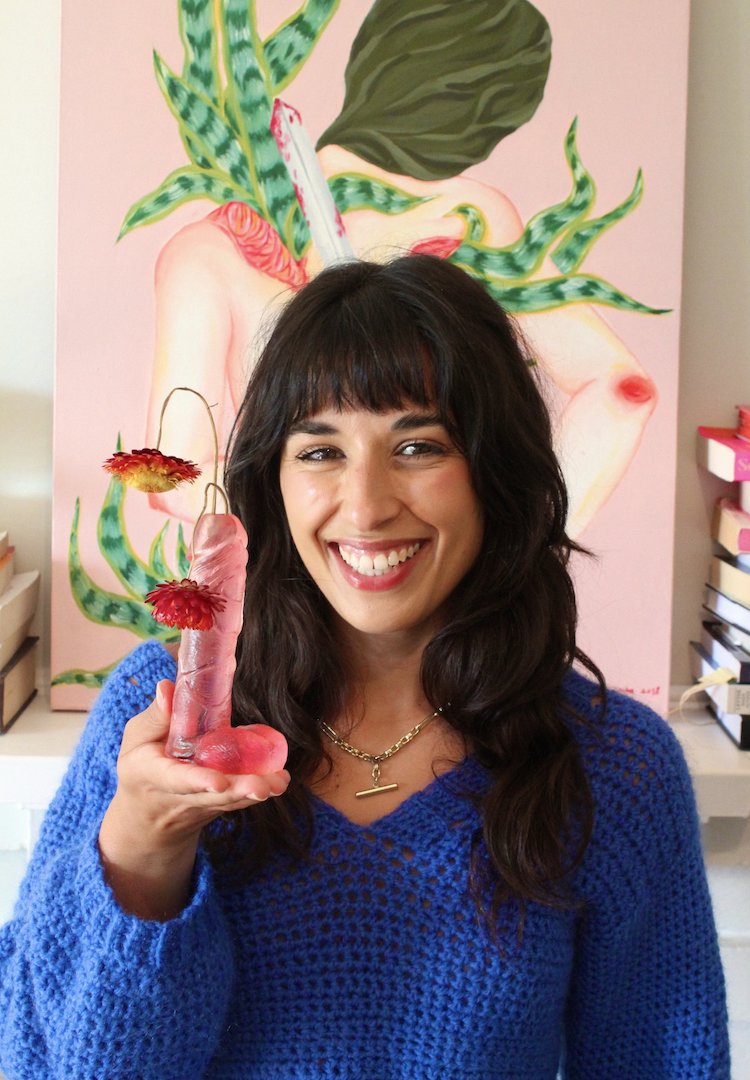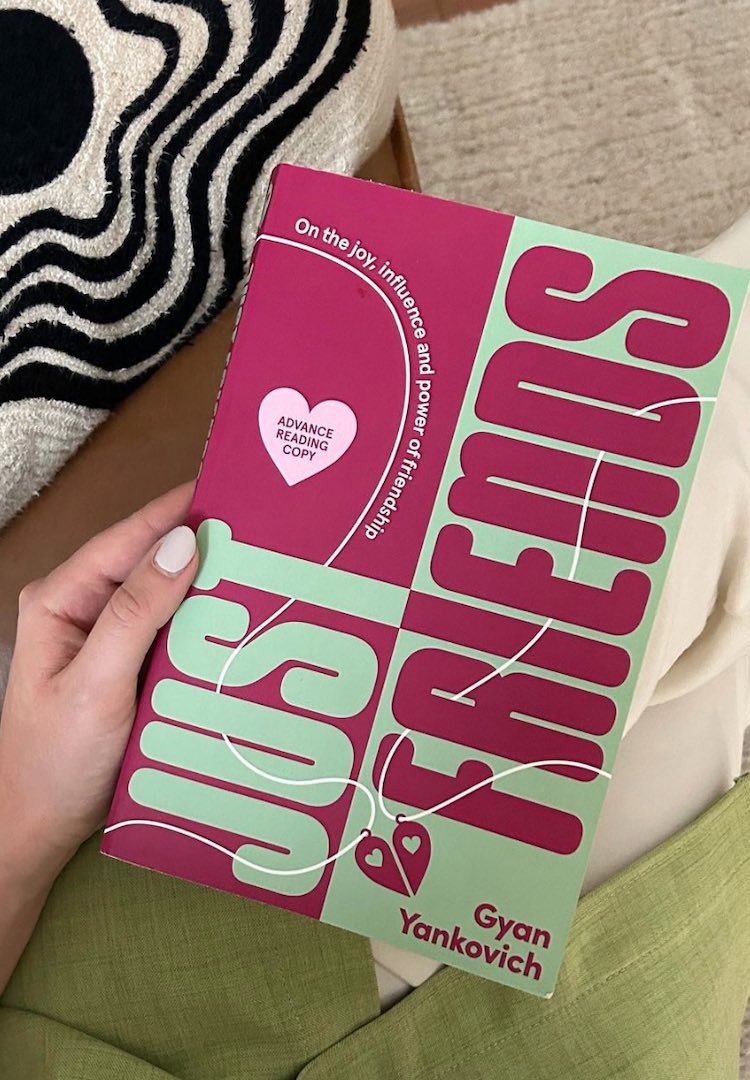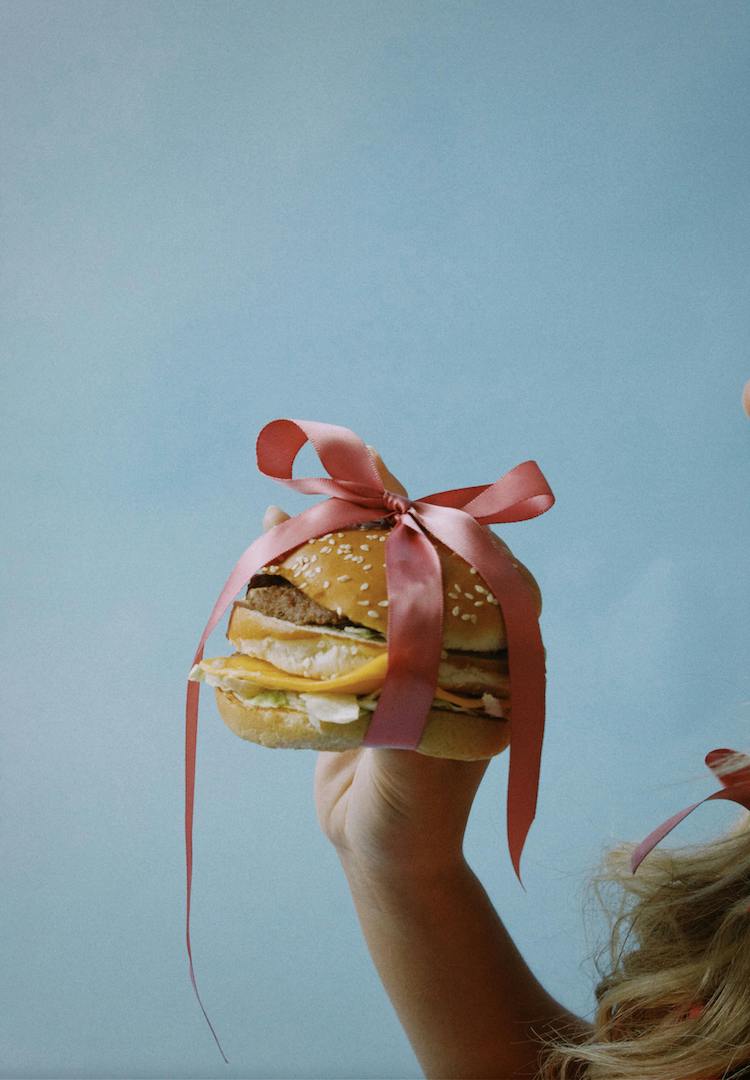Hear me out: Instagram’s beauty filters have the potential to do good
WORDS BY ANNA RICHARDS
On a platform overrun with look-alike dolls, wouldn’t it be more fun to look like yourself?
In October last year, Instagram banned augmented reality (AR) filters that offered a kind of hyper-temporary cosmetic procedure: a live edit of facial features that enlarged the wearer’s eyes, raised their cheekbones and pretty much deleted the nose. The result was comparable to the endless stream of almost identical-looking influencers on the social media platform – ethnically ambiguous Bratz dolls à la Kylie Jenner or Madison Beer.
If the pressure to conform to a uniform of ‘beauty’ wasn’t deafening enough, now there was no excuse. Scrolling through Instagram, you couldn’t be blamed for thinking that one woman was doing a takeover of the entire platform.
This stamp of beauty had grown, surely in part, thanks to those major influencers whose perfectly clear skin and piece-of-paper stomachs demanded to be seen over and over again in a constant stream of branded imagery. If they had all come to look like this seemingly as a result of turning 18, wasn’t the logical conclusion that fellow members of their generation should or could too?
There’s a slight sense of guilt that comes with using these filters as a woman who hopes she holds strong values on body image – or at least hopes that she’s not too superficial. On a day at home previous to the ban, I pressed the ‘try-it’ button on one of the filters; casual, just like ‘trying on’ a shirt. In one second I passed for a millennial model slash influencer, only without the light-flooded apartment or European beach as a background.
Huge almond-shaped eyes stretched towards the edge of my hairline, adorned with perfectly feathered eyebrows. My forehead was neatly tightened, and a thin straight line was dropped in the centre of my face as if with a sigh, like my sense of smell had just made the cut. As a final touch, my invisible surgeons ballooned my lips into a cupid’s bow and set them in a dumbass pout.
I obviously felt immediately insecure: flaws I hadn’t known existed had been carefully erased, and when I removed the filter my old face looked weirdly unfamiliar. A mental “Oh no” momentarily flashed through my mind.
So why did we use them? Because we were bored? For desirable reactions on our posts? Or for suggestions of who we could be if we spent enough money? In the cosmetic surgery industry, which has increased by 200 per cent since 2000, face augmentation apps like Facetune and Instagram’s filters are being used by people in pre-surgery appointments, as goals to be reached.
Instagram cited the reason for removing the filters as a move towards improving the mental health of its users. A spokesperson said: “We’re re-evaluating our policies – we want our filters to be a positive experience for people.” Positivity sounds like a hard goal to reach for technology that exists to point out what isn’t positive about us.
But since the ban, a new wave of alternative AR filters has been offered up. Savvy brands like Versace and Glossier have commercialised them to launch new products or announce fashion shows. Comics like Benito Skinner have launched filters that let you try on personas from their skits.
It’s nice to see brands using tech in interesting ways, inviting users to play with the products they identify with. But with ‘positivity’ in mind, more important than the commercial is the creative, artistic or expressive potential of AR filters. On a platform overrun with look-alike dolls, wouldn’t it be more fun to look like yourself? Nikki Manfrin, a Melbourne-based creative, makes filters that allow us to adorn our face with something striking, rather than altering our make.
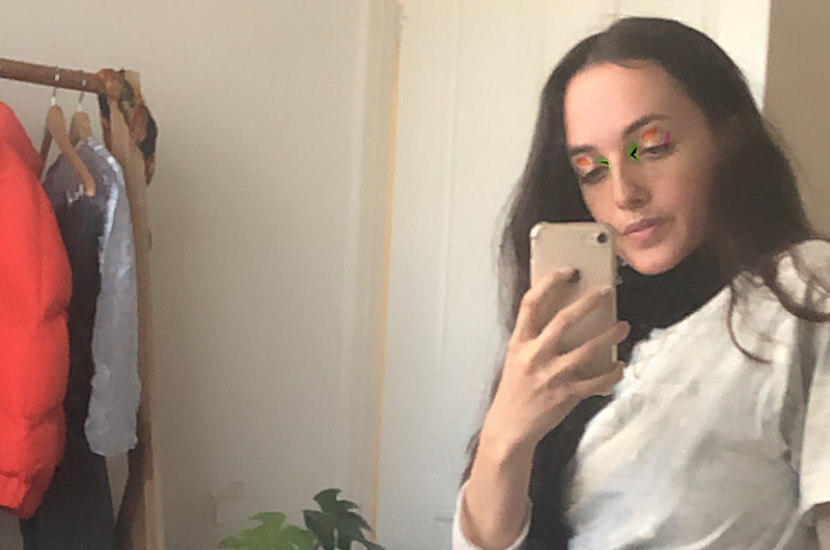
Anna trying out Nikki Manfrin’s AR filter
“I started creating face filters because I was super intrigued by the relatively new concept of augmented reality. My best friend Kristina is a makeup artist, and to stay inspired during iso she continued to create looks. I thought it would be apt to do a collaboration with her as being able to ‘try on’ a look could be a really great way to publicise work and stay relevant during this trying time for artists.”
Nikki’s filters have a celebratory feel to them. As your camera adjusts, swipes of orange sit where eyeshadow would, and green arrows add an edge to an otherwise unedited face. “They highlight Kristina’s more abstract and unconventional makeup designs. The filters feature neon colours and shapes on the face, which represents the eclectic looks that she loves to do,” Nikki says.
She highlights the potential for small businesses and creatives to utilise AR in an artistic way. “I have goals to work with a small business and extend a recurring fashion design into a filter sometime in the near future, but mainly working with others to give their work some fun publicity would be my main projection.”
Can something that existed in Instagram’s most superficial space evolve to become a tool for bigger things? Nikki believes so. “I think AR works as a really entertaining way to expose your work if you’re an artist, designer or small business. But I think it’s also quite a powerful tool in providing a ‘gallery experience’ to those that can’t access cultural spaces during the pandemic or otherwise.”

